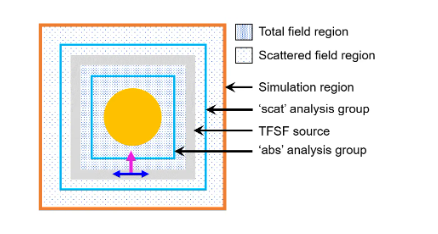-
-
March 8, 2024 at 2:51 am
Rosmin_Elsa_Mohan
SubscriberHello team,
would like to check on the setting ' extend structure through PML' under boundary conditon tab for FDTD simulations. Does this mean the structure infinitely extends beyond PML ?
Alternatively, how can we have PML boundary conditions/ other boundary conditions to study scattering for particles that are extending over a volume ? -
March 8, 2024 at 5:48 pm
Amrita Pati
Ansys EmployeeHi Rosmin,
We have an article on 'extend structure through PML': Always extend structures through PML boundary conditions. Please have a look and let me know if you have any questions.Alternatively, how can we have PML boundary conditions/ other boundary conditions to study scattering for particles that are extending over a volume ?
Do the particles extend through the geometry in a certain direction only? Are these particles setup as a periodic arrangement? If it is a non-periodic structure, we mostly use PML BCs. Would be able to share a screenshot of the geometry? Maybe I can provide more detailed information.
Regards,
Amrita -
March 11, 2024 at 1:03 am
Rosmin_Elsa_Mohan
SubscriberHi Amrita,
I would like to refer to the Mie scattering example , Mie scattering (FDTD) – Ansys Optics , the boundary conditions are PML on all sides. Can we use PML if more spherical structures extend uniformly in all directions, that is more particles within the scattering/absorption analysis regions ? As you mentioned if its non periodic structure , we can use PML – does this hold true here?
If PML BC are used on x,y,z directions and if the ‘extend through PML’ is checked – can we assume the strucure(s) are extending through the PML boundaries?
Appreciate the advice.
-
- The topic ‘PML boundary conditions for scattering’ is closed to new replies.



-
4177
-
1487
-
1363
-
1194
-
1021

© 2025 Copyright ANSYS, Inc. All rights reserved.








